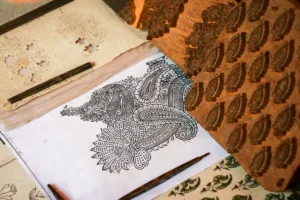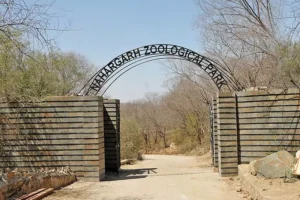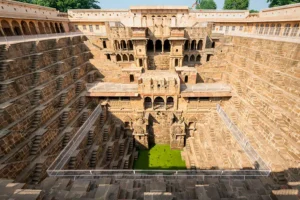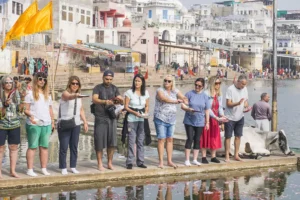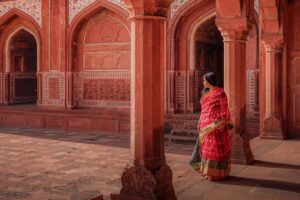Hawa Mahal, Jaipur: History, Entry Fees, Timings, and More!
Hawa Mahal, or the Palace of Winds, stands as one of the most iconic symbols of Jaipur, Rajasthan. This exquisite structure captivates visitors with its unique architectural style and rich historical significance. Whether you are an architecture enthusiast, a history buff, or a traveler seeking to explore the vibrant culture of India, Hawa Mahal is a must-visit destination. In this blog post, we will delve into the history, architecture, entry fees, timings, and other essential details to enhance your visit to this stunning monument.
Location Details
Hawa Mahal Rd, Badi Choupad, J.D.A. Market, Kanwar Nagar, Jaipur, Rajasthan 302002, India
A Glimpse into History
Constructed in 1799 by Maharaja Sawai Jai Singh II, the founder of Jaipur, Hawa Mahal was built as an extension of the City Palace. The primary purpose of this grand palace was to allow the royal women to observe the street festivities without being seen by the public. The structure reflects the lifestyle of the royal family and the significance of privacy in their culture.
The architectural design of Hawa Mahal is attributed to Lal Chand Ustad, who blended elements of Rajput and Mughal styles to create a unique and eye-catching façade. The palace features 953 small windows (jharokhas), adorned with intricate latticework, which not only provides ventilation but also ensures the privacy of the royal women. The name "Hawa Mahal" translates to "Palace of Winds," aptly describing the refreshing breeze that flows through its many openings.
Architectural Marvel
Hawa Mahal’s design resembles a crown or the feathers of a peacock, symbolizing beauty and grace. The five-story structure rises to a height of approximately 50 feet and is constructed from pink sandstone, a hallmark of Jaipur's architectural style. The façade is characterized by its stunning geometric patterns and ornamental details, showcasing the craftsmanship of the artisans of that era.
Visitors can explore the interior of the palace, which consists of spacious courtyards, intricate pillars, and delicate screens. The palace's upper floors provide breathtaking views of the bustling streets of Jaipur and the nearby City Palace. The intricate carvings and the play of light and shadow inside the palace create a mesmerizing experience that reflects the artistry of traditional Indian architecture.
Entry Fee and Timings
| Visitor Category | Entry Fee |
|---|---|
| Indian Citizens | ₹50 per person |
| Foreign Tourists | ₹200 per person |
| Children (up to 7 years) | Free |
Timings
| Day | Visiting Hours |
|---|---|
| Monday to Sunday | 9:00 AM to 5:00 PM |
*Please note that fees are subject to change, so it’s advisable to check the official website or local information before your visit.
Location and How to Get There
Hawa Mahal is strategically located in the heart of Jaipur, making it easily accessible from various parts of the city.
Address:
Hawa Mahal Rd, Badi Choupad, Pink City, Jaipur, Rajasthan 302002, India
Getting There
- By Car or Taxi: Taxis and auto-rickshaws are widely available in Jaipur. You can hire a cab or use ride-hailing apps to reach Hawa Mahal conveniently.
- Public Transport: The local bus service operates in Jaipur, with stops near Hawa Mahal. However, using taxis or auto-rickshaws is more comfortable, especially for tourists.
Nearby Attractions
Hawa Mahal is surrounded by several other attractions that are worth exploring:
- City Palace: Located just a short walk away, this magnificent palace complex offers a glimpse into the royal heritage of Jaipur.
- Jantar Mantar: An astronomical observatory featuring impressive instruments for measuring time and celestial positions, Jantar Mantar is a UNESCO World Heritage Site.
- Nahargarh Fort: Perched on the Aravalli hills, this fort provides panoramic views of Jaipur and is a great spot for sunset views.
- Jaipur bazaars: Don't miss out on exploring the vibrant markets nearby, such as Johari Bazaar and Bapu Bazaar, where you can shop for traditional handicrafts, jewelry, and textiles.
Tips for Visiting Hawa Mahal
- Dress Modestly: Since Hawa Mahal is a historical site, dressing modestly is recommended, respecting the culture and traditions of India.
- Photography: Be sure to carry your camera to capture the stunning architecture and vibrant surroundings. Early mornings or late afternoons offer the best lighting for photography.
- Guided Tours: Consider hiring a local guide or joining a guided tour to gain deeper insights into the history and architecture of Hawa Mahal and its significance.
- Stay Hydrated: Jaipur can be hot, especially during the summer months. Carry water and stay hydrated while exploring the city.
- Plan Your Visit: If possible, try to visit on weekdays to avoid large crowds, especially during the peak tourist season (October to March).
Conclusion
Hawa Mahal stands as a testament to the rich history and architectural prowess of Rajasthan. Its intricate designs and unique features make it a prominent landmark in Jaipur, attracting visitors from around the world. By exploring Hawa Mahal, you will not only witness a piece of history but also experience the beauty of Indian culture and artistry. Whether you are capturing photographs, learning about its history, or simply soaking in the ambiance, a visit to Hawa Mahal is sure to be a memorable highlight of your journey in Jaipur.
Contact Us for Your Tour Queries
If you have any inquiries about our Golden Triangle tours covering Delhi, Jaipur, Agra, or other Rajasthan tours, please feel free to reach out to us.
Phone: +91 95719 15083
Email: enquiry@rajasthantourdriver.com
We’re here to assist you with all your travel needs!




